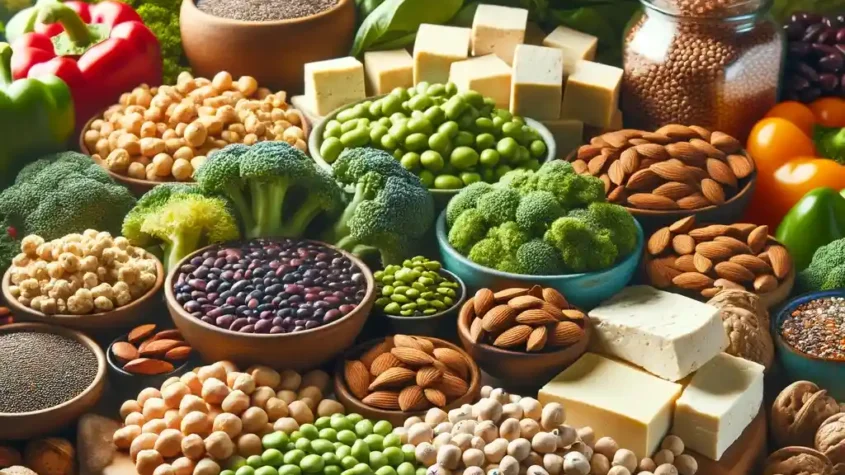
Finding adequate protein sources can be challenging for those following a vegetarian diet. Wellhealthorganic.com discusses various vegetarian protein sources that not only meet nutritional needs but also support a healthy lifestyle. By exploring diverse options, individuals can enjoy a balanced diet while reducing their reliance on animal products. In this article, we will cove wellhealthorganic.com:vegetarian protein sources
Vegetarian protein sources range from legumes and beans to nuts, seeds, and whole grains. Each option offers unique benefits, making it possible to tailor protein intake to personal preferences and dietary requirements. This variety encourages creativity in meal preparation and can enhance the overall dining experience.
Understanding the benefits of these protein sources can empower individuals to make informed dietary choices. Embracing vegetarian proteins can lead to improved health outcomes and a greater appreciation for plant-based foods, ultimately contributing to a more sustainable way of living.
Exploring Vegetarian Protein Sources
Vegetarian diets can provide sufficient protein through a variety of sources. Important categories include legumes, whole grains, nuts, seeds, and plant-based meat alternatives. Each category offers unique benefits and essential nutrients.
Legumes and Beans
Legumes and beans are rich in protein and fiber, making them a staple in vegetarian diets. Popular options include lentils, chickpeas, black beans, and kidney beans.
- Protein Content: Lentils contain about 18 grams of protein per cooked cup.
- Nutritional Benefits: They are also rich in iron, folate, and antioxidants.
Incorporating these foods into meals can enhance nutrition. They work well in soups, salads, and side dishes. Their versatility allows for various flavor profiles, making them suitable for many cuisines.
Whole Grains
Whole grains offer essential protein and additional health benefits. They provide amino acids and are an excellent source of complex carbohydrates as well. Common grains include quinoa, brown rice, farro, and barley.
- Protein Content: Quinoa is a complete protein, containing all nine essential amino acids. It has about 8 grams of protein per cooked cup.
- Health Benefits: Whole grains also contribute dietary fiber, which aids digestion and promotes satiety.
Incorporating whole grains into meals can enhance texture and flavor. They can be used as a base for bowls, in salads, or as side dishes.
Nuts and Seeds
Nuts and seeds are concentrated sources of protein and healthy fats. Almonds, chia seeds, pumpkin seeds, and hemp seeds are popular choices among vegetarians.
- Protein Content: Two tablespoons of hemp seeds provide about 10 grams of protein.
- Nutritional Benefits: They are also rich in omega-3 fatty acids and essential vitamins.
These foods can be added to smoothies, salads, or yogurt for an extra protein boost. They also serve as nutritious snacks on their own or in trail mixes.
Plant-Based Meat Alternatives
Plant-based meat alternatives have gained popularity for their protein content and convenience. Products made from soy, peas, and mushrooms mimic traditional meat textures.
- Protein Content: Many plant-based burgers contain around 20 grams of protein per serving.
- Varieties Available: Options include tofu, tempeh, seitan, and ready-made veggie burgers.
These alternatives can be grilled, sautéed, or incorporated into various dishes. They provide a meat-like experience without animal products, making them suitable for diverse diets.
Maximizing Protein Absorption
To optimize protein absorption from vegetarian sources, it is essential to consider how different protein sources can be combined and the impact of cooking techniques. These factors can enhance the nutritional quality and bioavailability of plant-based proteins.
Combining Protein Sources
Combining different vegetarian protein sources can create a complete amino acid profile. Many plant proteins are incomplete, meaning they lack one or more essential amino acids. For example, pairing beans with rice provides a broader range of amino acids.
Popular combinations include:
- Lentils and whole grains (e.g., brown rice)
- Quinoa with beans
- Peanut butter on whole grain bread
By strategically consuming a variety of proteins, individuals can ensure they are receiving all the necessary amino acids for optimal health.
Role of Cooking and Preparation
Cooking methods can significantly influence protein absorption as well. Techniques such as soaking, boiling, or sprouting legumes and grains can break down anti-nutrients, which inhibit nutrient absorption.
For instance, soaking beans overnight and discarding the water can reduce oligosaccharides that often cause digestive issues.
Recommended preparation methods:
- Soaking legumes before cooking
- Sprouting grains and seeds for improved digestibility
- Cooking vegetables to soften cell walls and enhance nutrient release
These methods can maximize the bioavailability of nutrients and improve protein digestion.
How Experts in SEO Service in India Utilize Data Analytics for Predictive SEO Strategies
Though it sounds like a large and complex term, data analytics is basically only a means o…










